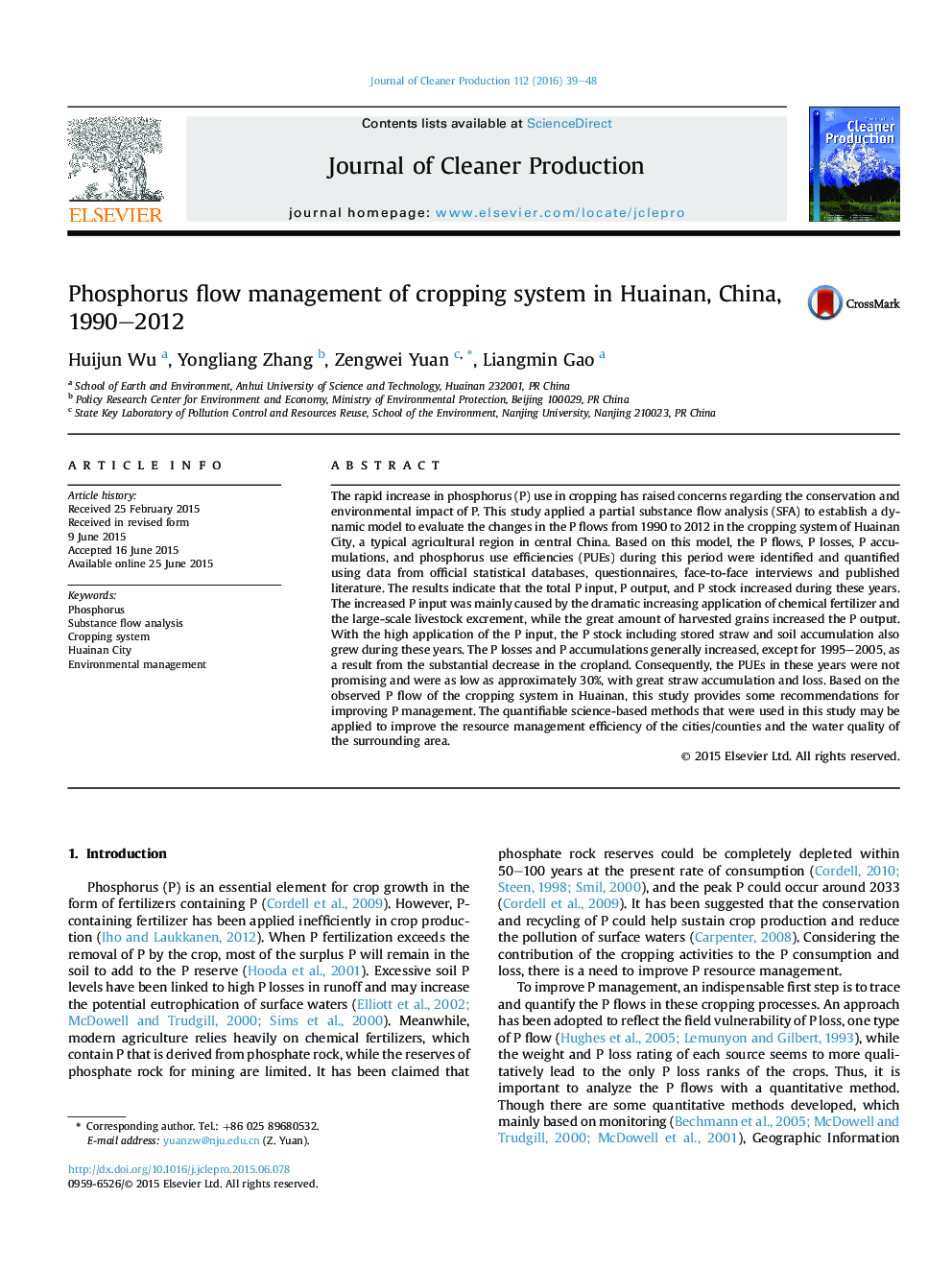| Article ID | Journal | Published Year | Pages | File Type |
|---|---|---|---|---|
| 10688012 | Journal of Cleaner Production | 2016 | 10 Pages |
Abstract
The rapid increase in phosphorus (P) use in cropping has raised concerns regarding the conservation and environmental impact of P. This study applied a partial substance flow analysis (SFA) to establish a dynamic model to evaluate the changes in the P flows from 1990 to 2012 in the cropping system of Huainan City, a typical agricultural region in central China. Based on this model, the P flows, P losses, P accumulations, and phosphorus use efficiencies (PUEs) during this period were identified and quantified using data from official statistical databases, questionnaires, face-to-face interviews and published literature. The results indicate that the total P input, P output, and P stock increased during these years. The increased P input was mainly caused by the dramatic increasing application of chemical fertilizer and the large-scale livestock excrement, while the great amount of harvested grains increased the P output. With the high application of the P input, the P stock including stored straw and soil accumulation also grew during these years. The P losses and P accumulations generally increased, except for 1995-2005, as a result from the substantial decrease in the cropland. Consequently, the PUEs in these years were not promising and were as low as approximately 30%, with great straw accumulation and loss. Based on the observed P flow of the cropping system in Huainan, this study provides some recommendations for improving P management. The quantifiable science-based methods that were used in this study may be applied to improve the resource management efficiency of the cities/counties and the water quality of the surrounding area.
Related Topics
Physical Sciences and Engineering
Energy
Renewable Energy, Sustainability and the Environment
Authors
Huijun Wu, Yongliang Zhang, Zengwei Yuan, Liangmin Gao,
